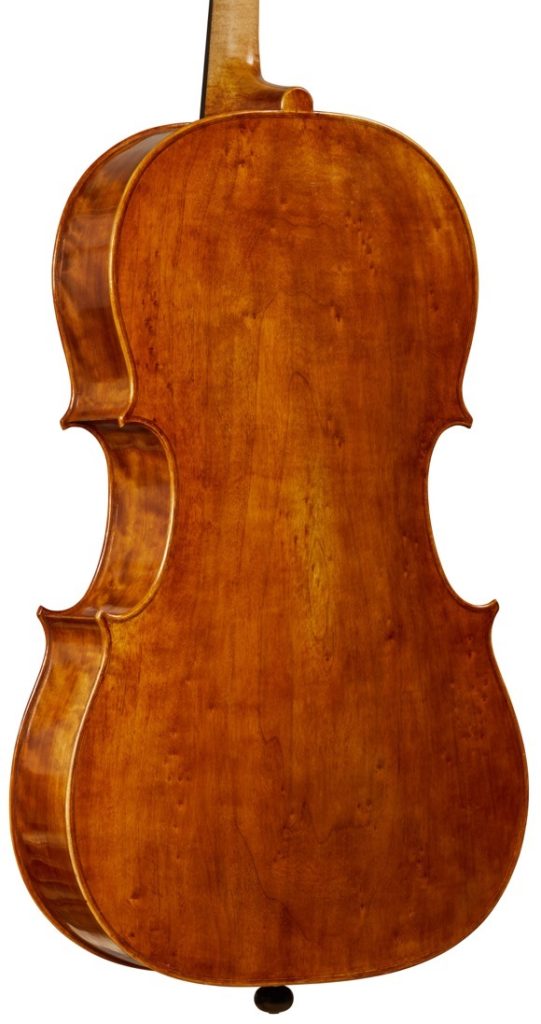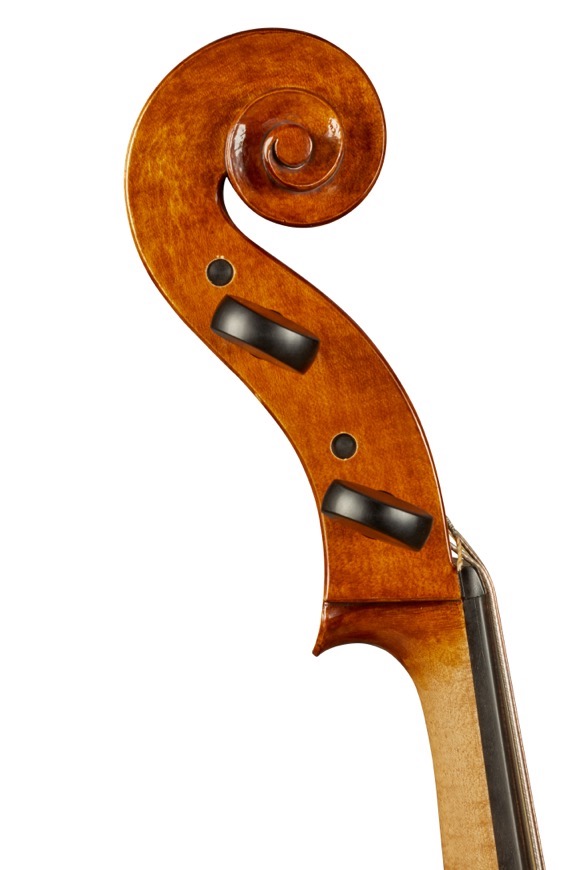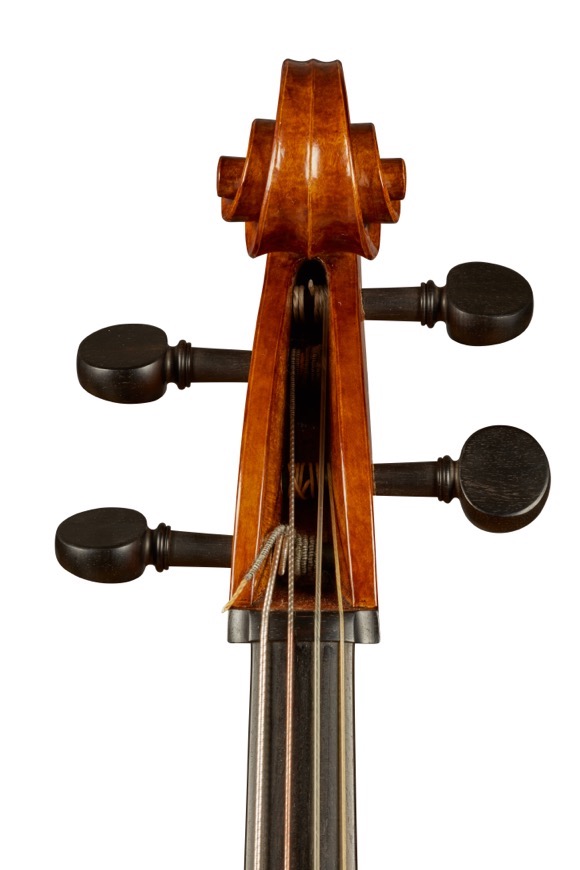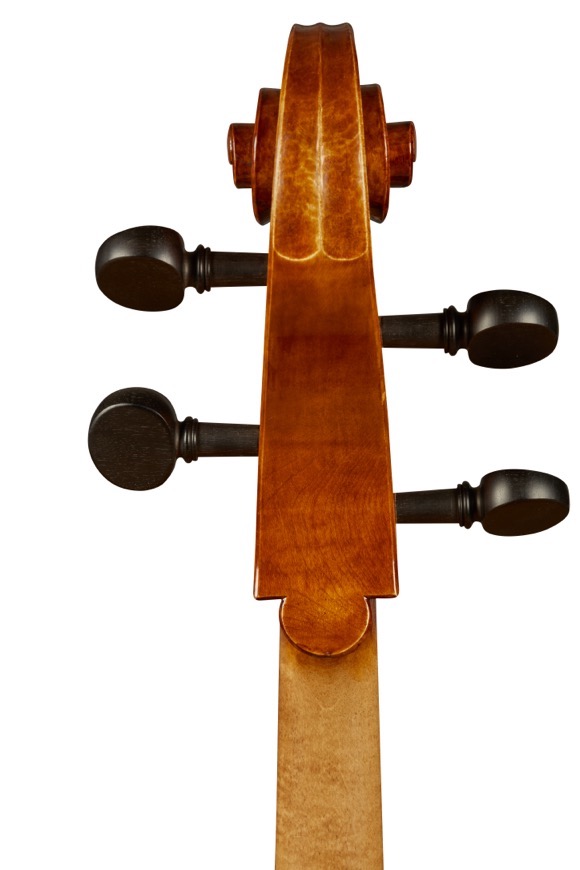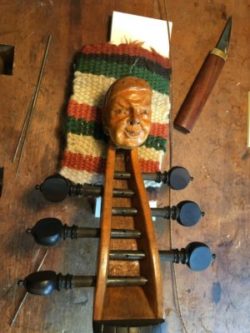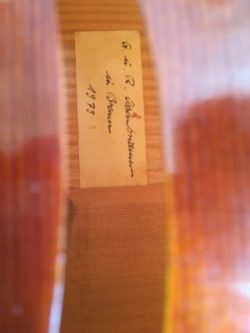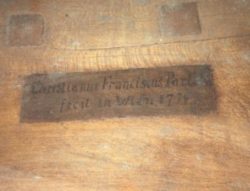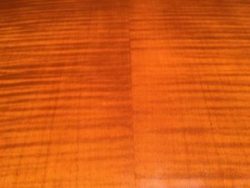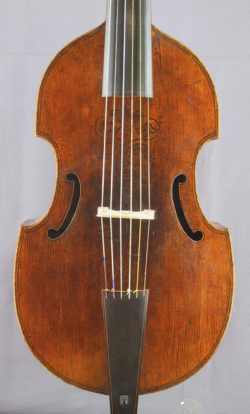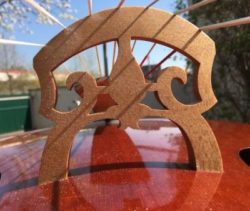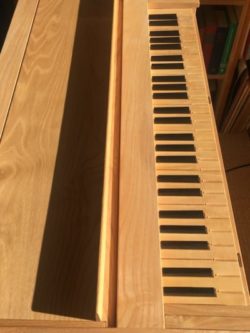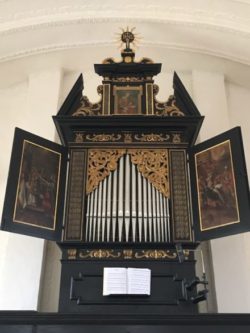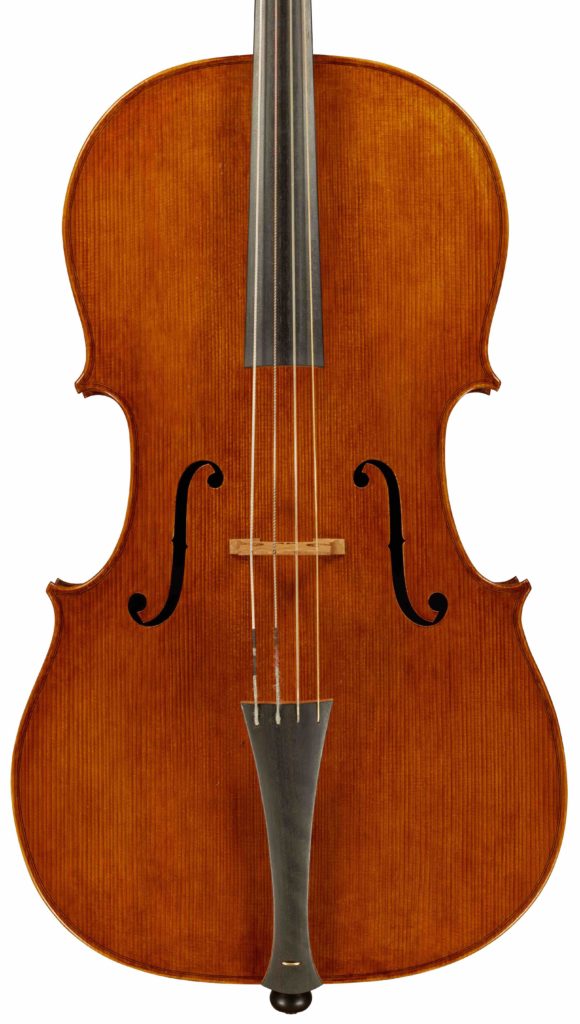
Form and proportions of this wonderful baroque cello by Reinhard Ossenbrunner were inspired by a violoncello made in 1717 by Pietro Giacomo Rogeri. I simply wished for a ‘wonderful baroque cello’, on which I would be playing 18th-century solo literature and continuo parts by J. S. Bach – and the instrument turned out to be just what I had hoped for! The cello is capable of producing an captivating cantabile, it lends itself to glamourous solo singing and produces firm, physical bass notes in its lower register. It provides a profound grounding to an orchestra or a chamber group, yet it is also very responsive and has a rich and enduring resonance.
The cello is strung with three plain gut strings and only the lowest C-string is silver wound. This corresponds to historical usage well into the 18th century (whereas many contemporary baroque cellos have two covered gut strings on G and C). Thus the fairly large diameters of the lower strings exhibit a beautiful haptic quality which is reflected in the fantastic materiality of the bass sounds.
